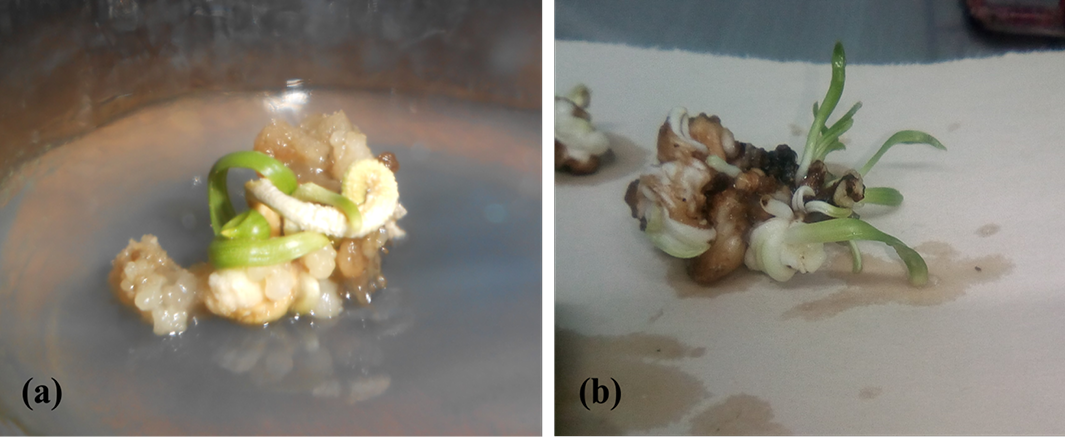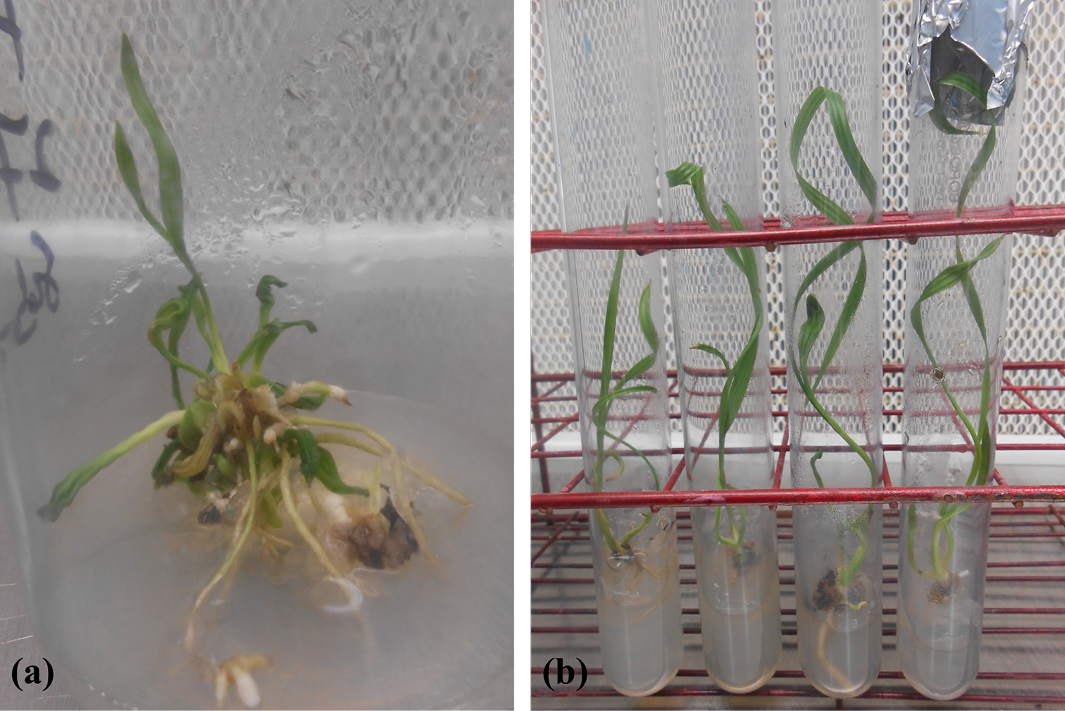Factors Influencing Somatic Embryogenesis and Plantlet Regeneration of Date Palm using Immature Floral Buds
Factors Influencing Somatic Embryogenesis and Plantlet Regeneration of Date Palm using Immature Floral Buds
Najamuddin Solangi1*, Mushtaque Ahmed Jatoi1, Adel Ahmed Abul-Soad2, Abdul Aziz Mirani1, Muhammad Aslam Solangi3 and Ghulam Sarwar Markhand1
(a) Spathe without any crack, (b) Crack in spathe cover, (c) Inflorescence bunch, (d) Spikelets cultured on initiation medium.
(a) Callus formation in all floral buds obtained from 17 cm long immature spathe, (b) Spikelet explants obtained from 32 cm long spathe failed to produce callus.
(a) Callus induction in immature spikelets on the medium consisted of 2.0 mg L-1 2,4-D + 0.5 mg L-1 2iP, (b) Somatic embryogenesis on the medium consisted of 0.05 mg L-1 2,4- D + 2 mg L-1 2iP.
(a) Formation of normal repeated and non-repeated somatic embryos from callus on the medium consisted of 0.05 mg L-1 2,4-D + 2 mg L-1 2iP under full dark after nine month of initiation, (b) Germination of somatic embryos on the medium consisted of 0.05 mg L-1 NAA, 1 mg L-1 Kin.
(a) Cluster of plantlets with roots produced from repeated somatic embryos, (b) Plantlet (10 cm long) of cv. Begum Jungi isolated from cluster and cultured in long tubes for further growth on the medium consisted of 0.1 mg L-1 NAA and 0.1 mg L-1 BA.













